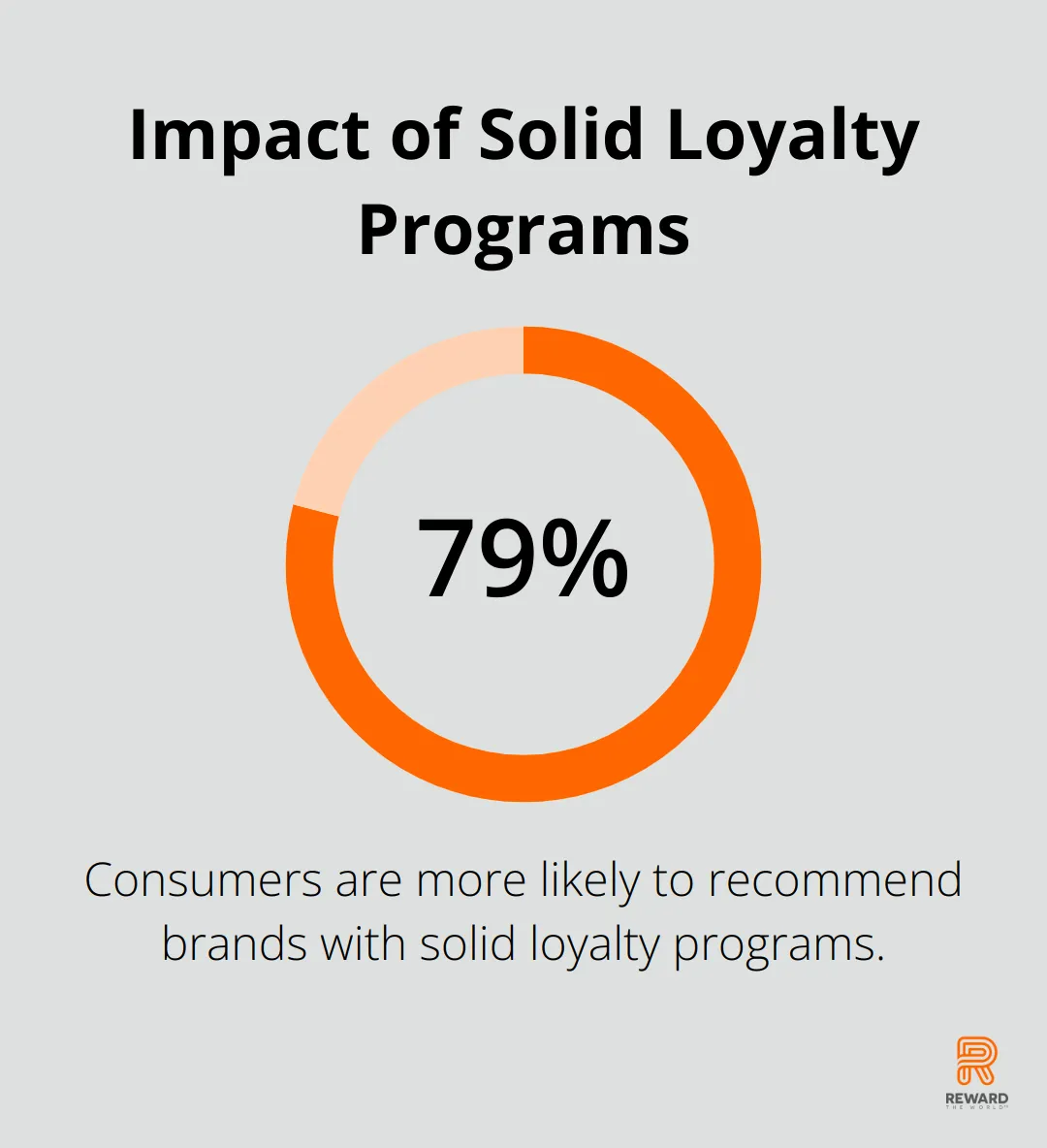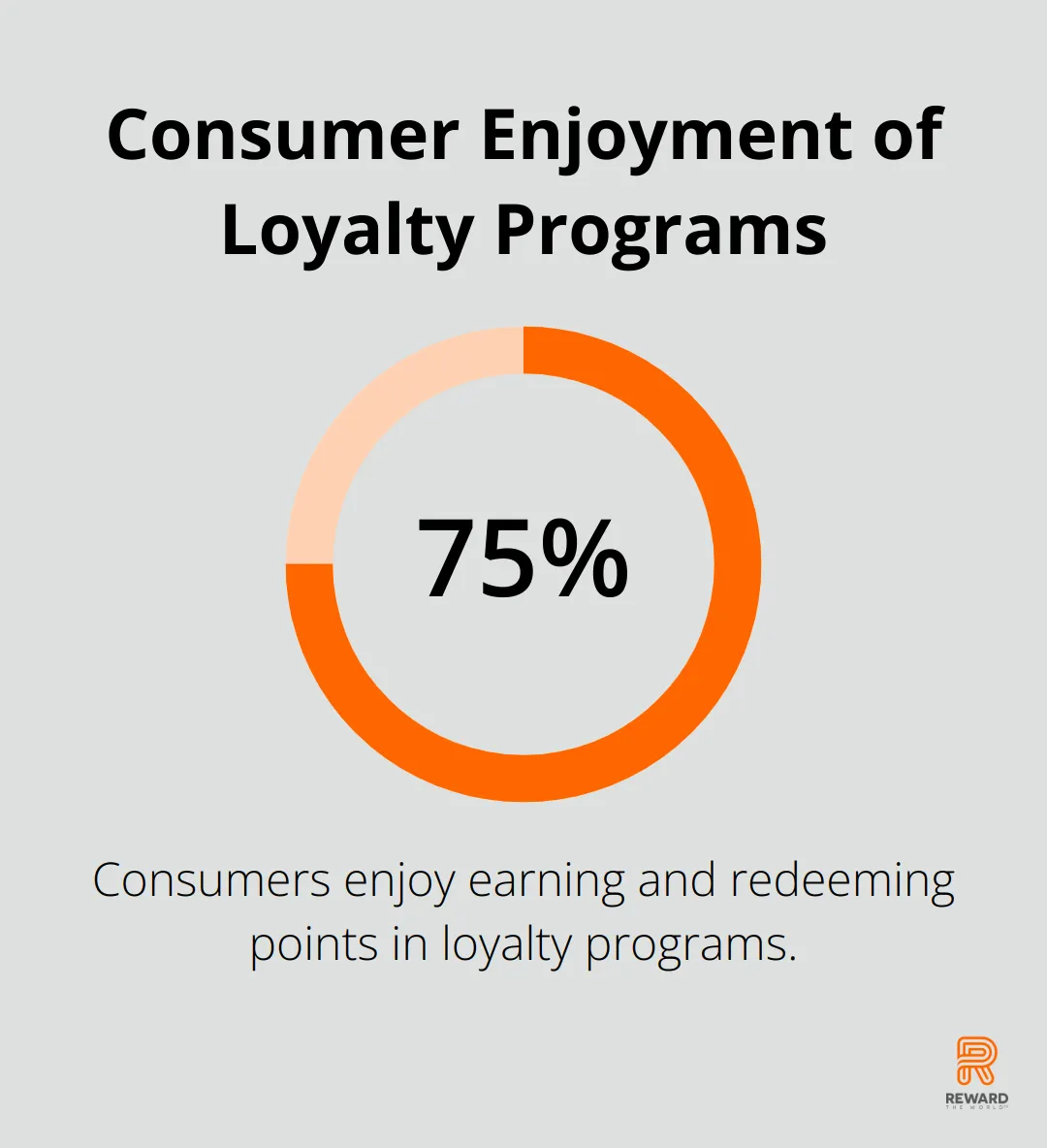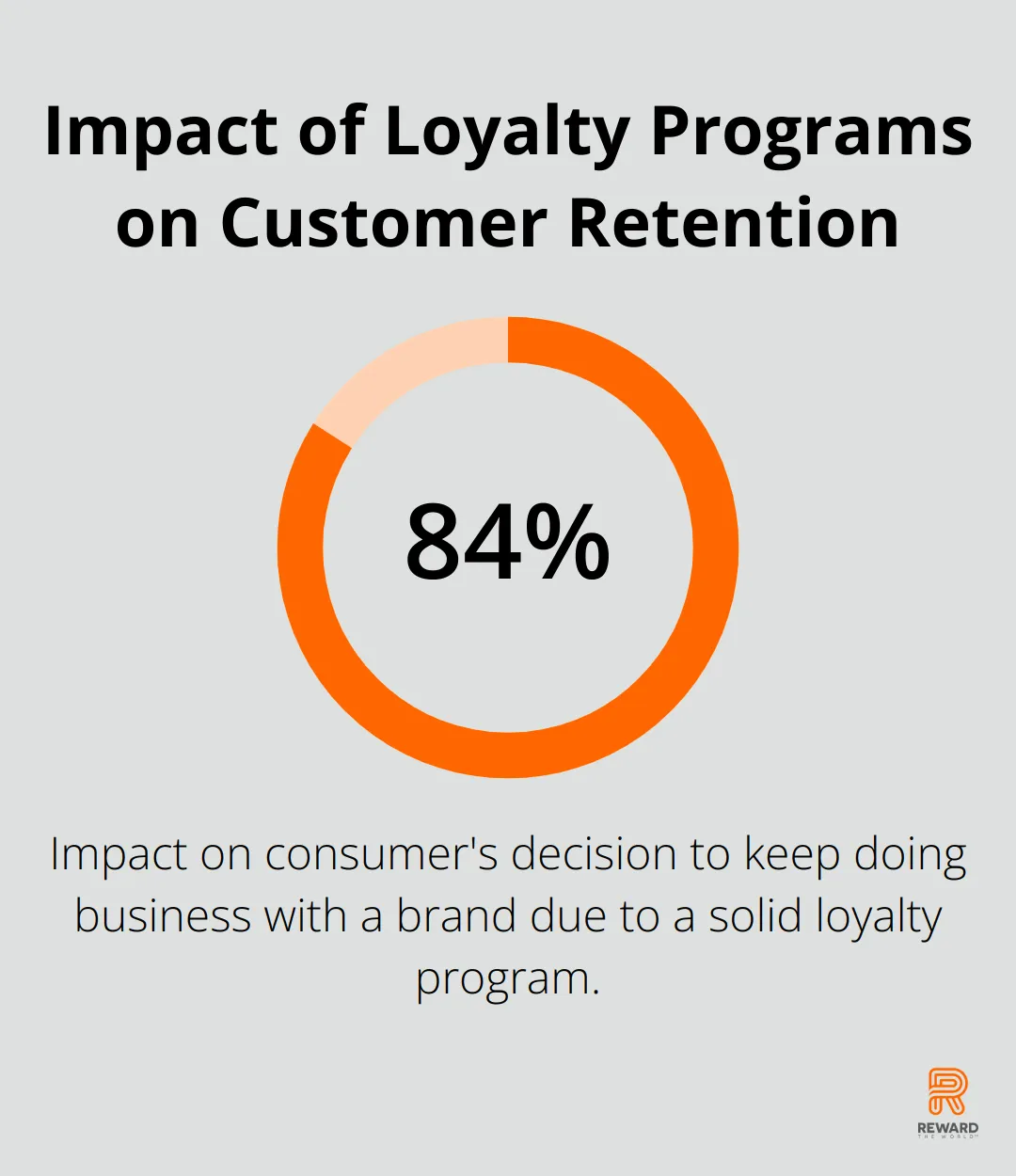
At Reward the World, we understand the power of emotional branding in creating lasting connections with customers.
Rewards programs have evolved beyond simple transactions, becoming powerful tools for building genuine relationships.
This blog post explores how to craft reward strategies that resonate on an emotional level, fostering loyalty and engagement.
What Drives Reward-Seeking Behavior?
The Dopamine Effect
The psychology behind rewards forms the foundation of effective loyalty programs. At the heart of this psychology lies the brain’s reward system, primarily driven by dopamine. This neurotransmitter plays a pivotal role in motivation, pleasure, and reinforcement learning.
Dopamine drives learning, habit formation, and goal-directed actions by reinforcing behaviors that lead to pleasure. Two key pathways-mesolimbic and others-are involved in this process. This release occurs not only upon receiving the reward but also in anticipation of it. The anticipatory effect explains the effectiveness of loyalty programs. They create a cycle of anticipation and satisfaction that keeps customers returning.
A Journal of Consumer Research study found that reward anticipation can motivate more than the reward itself. This finding sheds light on why points-based systems (where customers can track their progress towards a reward) often engage more than one-off discounts.
Motivation and Loyalty
Rewards don’t just evoke positive feelings – they shape behavior. When we associate a specific action with a positive outcome, we tend to repeat that action. This association forms the basis of customer loyalty.
However, all rewards don’t hold equal value. The most effective rewards align with the customer’s values and desires. A Bond Brand Loyalty study revealed that 79% of consumers are more likely to recommend brands with solid loyalty programs.

Extrinsic vs. Intrinsic Rewards
The design of a rewards program requires a clear understanding of the difference between extrinsic and intrinsic rewards. Extrinsic rewards include tangible benefits like discounts or free products. While effective, they can sometimes lead to a transactional relationship with customers.
Intrinsic rewards, conversely, tap into the customer’s internal motivations. These might encompass feelings of exclusivity, recognition, or alignment with personal values.
Balancing Reward Types
Successful reward programs strike a balance between extrinsic and intrinsic rewards. They offer tangible benefits while also appealing to customers’ deeper motivations. This balance creates a more holistic and engaging experience for participants.
The Power of Personalization
Personalized rewards can significantly enhance the emotional connection between a brand and its customers. By tailoring rewards to individual preferences and behaviors, companies can create more meaningful and impactful experiences. This personalization (based on data analytics and customer insights) can lead to higher engagement and loyalty rates.
The understanding of these psychological principles enables businesses to create reward programs that not only incentivize purchases but also build genuine, long-lasting relationships with their customers. The next section will explore the crafting of these emotionally resonant reward programs in detail.
How to Craft Emotionally Resonant Reward Programs
Personalization: The Key to Emotional Connection
Personalization transforms customer relationships. A study by Epsilon reveals that 80% of consumers are more likely to purchase when brands offer personalized experiences. This statistic highlights the necessity of tailoring rewards to individual preferences.
To start, segment your customer base. Use data analytics to understand purchasing patterns, browsing behavior, and demographic information. This insight enables you to offer rewards that align with each customer’s interests and needs.
A coffee shop chain could offer a free pastry to a customer who frequently buys coffee but rarely indulges in snacks. This personalized approach demonstrates an understanding and appreciation of their specific habits.
The Power of Surprise and Delight
Unexpected rewards create powerful emotional connections. The element of surprise triggers a dopamine release, enhancing the positive association with your brand.
Implement random acts of kindness in your reward program. Send a small gift on a customer’s birthday or offer a surprise discount on a frequently purchased item.
Sephora’s Beauty Insider program occasionally surprises members with bonus points or free samples, creating moments of delight that strengthen brand loyalty.
Storytelling: Weaving Your Brand into Rewards
Incorporating your brand’s values and story into your rewards program creates a deeper emotional connection. This approach transcends transactional relationships, fostering a sense of shared purpose with your customers.
TOMS’ One for One program builds a loyal and engaged customer base. Customers who buy from TOMS are not just purchasing a product, but also supporting a cause that they care about.
You can offer rewards that reflect your brand’s mission. If environmental sustainability is a core value, offer eco-friendly products as rewards or donate to environmental causes on behalf of your customers.
Gamification: Making Rewards Fun and Engaging
Gamification adds an element of fun and competition to your reward program, increasing engagement. The 2024 Loyalty Barometer Report found that 75% of consumers enjoy earning and redeeming points in loyalty programs.

Try implementing a tiered system where customers can level up based on their engagement. Each tier could offer increasingly valuable rewards, creating a sense of achievement and progression.
Starbucks Rewards exemplifies effective gamification. Customers earn stars for purchases, which they can then redeem for rewards. The program includes challenges and bonus star events, adding excitement to the reward-earning process.
These strategies create a reward program that resonates emotionally with your customers, fostering long-term loyalty and engagement. The next chapter will explore how technology can further enhance these emotional connections through rewards.
How Technology Enhances Emotional Connections Through Rewards
Technology plays a pivotal role in creating and maintaining emotional connections with customers through reward programs. Advanced tools and platforms enable businesses to deliver personalized, timely, and engaging rewards that resonate with customers on a deeper level.
Harnessing Predictive Analytics
Predictive analytics has revolutionized the way businesses understand and anticipate customer needs. Companies can now predict customer preferences and behaviors with remarkable accuracy by analyzing vast amounts of data. A study examining the impact of AI tools on productivity revealed that customer service support agents handled 13.8% more customer inquiries per hour.
Amazon’s recommendation engine uses predictive analytics to suggest products based on browsing history, past purchases, and similar customer profiles. This level of personalization creates a sense of being understood, fostering a stronger emotional connection between the customer and the brand.
To implement predictive analytics in your reward program:
- Collect and analyze customer data from various touchpoints
- Create detailed customer profiles and segment your audience
- Use machine learning algorithms to predict future behaviors and preferences
- Offer rewards that truly resonate with each individual customer
Real-Time Reward Delivery
The immediacy of reward delivery can significantly impact its emotional value. Merkle’s 2024 report shows that a solid customer loyalty program has an 84% impact on a consumer’s decision to keep doing business with a brand. Real-time reward delivery systems capitalize on this preference, creating immediate positive associations with your brand.

Starbucks Rewards exemplifies this approach. Customers see their rewards balance increase instantly when they make a purchase using the Starbucks app. This immediate feedback loop reinforces positive behavior and strengthens the emotional connection to the brand.
To implement real-time reward delivery:
- Invest in a robust digital infrastructure that processes transactions and updates reward balances instantly
- Consider partnering with a platform like Reward the World, which offers instant reward delivery across various categories
- Ensure that your customers experience immediate gratification regardless of their reward preferences
Gamification: Rewards as Experiences
Gamification adds an element of fun and excitement to reward programs, enhancing emotional engagement. Recent research aims to define the impact of adopting gamification in loyalty programmes on increasing e-customer loyalty. Incorporating game-like elements such as points, badges, leaderboards, and challenges creates a more immersive and enjoyable reward experience.
Nike’s Run Club app demonstrates successful gamification in a reward program. Users earn achievements for completing runs, participate in challenges, and compete with friends. This approach encourages regular engagement and creates a sense of accomplishment and community among users.
To gamify your reward program:
- Implement a tiered system where customers can level up based on their engagement
- Create challenges that align with your brand values and customer interests
- Use leaderboards to foster friendly competition among your most engaged customers
- Keep the rules simple and the rewards attainable to maintain motivation
These technological advancements allow businesses to create reward programs that not only incentivize purchases but also forge strong emotional connections with customers. The key lies in using technology to enhance the human element of your brand interactions, creating experiences that are both personalized and emotionally resonant.
Final Thoughts
Emotional branding through rewards creates lasting customer relationships. Personalization, surprise elements, storytelling, and gamification contribute to emotionally resonant reward programs. These strategies tap into customers’ intrinsic motivations, fostering meaningful experiences beyond transactional relationships.
Emotionally connected reward programs increase loyalty, boost engagement, and drive repeat business. They also create brand advocates who recommend products or services to others. This approach leads to a more sustainable and profitable business model (as evidenced by numerous case studies).
Reward the World offers valuable solutions for businesses striving to create emotionally connected reward programs. With global reach, instant reward delivery, and diverse options, it enables effective implementation of the strategies discussed. Emotional connections through rewards are a critical component of modern customer engagement strategies.
